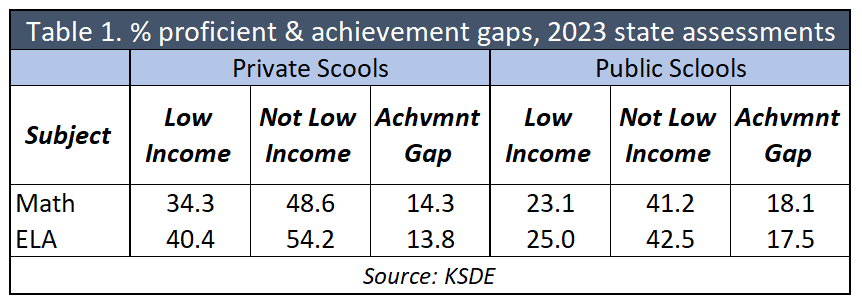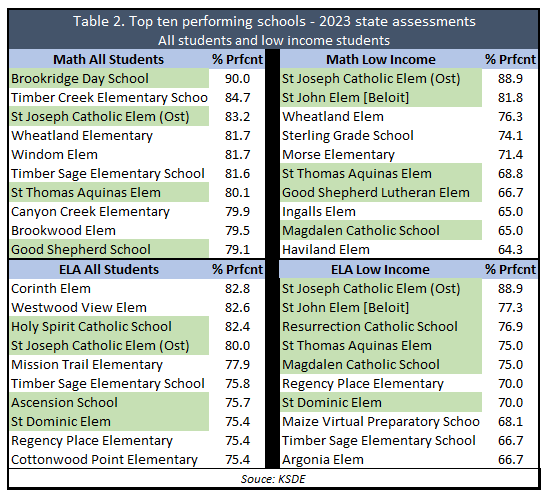Year after year, private schools, as a whole, outperform public schools when it comes to state assessment results. The results of the 2023 state assessments are yet another example. However, it seems the public-school establishment lives in an alternate reality when it comes to student achievement.
In testimony to the Kansas Senate Tax Committee on March 6, Leah Fliter, Assistant Executive of Director Advocacy for the Kansas Association of School Boards, made this implication that Kansas public schools outperform private schools: “Kansas public school students often perform as well as, or better, than their public school counterparts.” To put her testimony in context, Fliter also incorrectly lumps all school choice initiatives as “vouchers” – a term that is a dog whistle for all school choice opponents – and claimed that “vouchers in Louisiana caused a worse learning loss than Hurricane Katrina.” Yes, that is a direct quote.
KPI has written ad nauseum about how much better private schools do than public schools on state assessments. That point defies argument. Once again, Kansas students in private schools achieved higher scores on state assessments than their public-school counterparts. In both math and English language arts (ELA), for both low-income and not-low-income students, private school students had higher average proficiency rates.
What requires further attention is how much better private schools do than public schools when it comes to income-based achievement gaps.
Table 1 is a summary of those differences.

Private schools have lower achievement gaps based on income: 14.3 and 13.8 percentage points for math and ELA respectively, while public schools have gaps of 18.1 percentage points for math and 17.5 percentage points for ELA. One might think that with the over half billion dollars in at-risk funding to public schools, funding that is designed to reduce achievement gaps, public schools would do better than private schools. But as two LPA audits have shown the dedicated at-risk funding is being spent on services not directed to those students who most need it.
Not to get lost in the focus on achievement gaps, Table 2 shows that a disproportionate share of private schools is in the top ten of all schools for proficiency in math and ELA for both all students and low income students. There are 1,161 public schools reported by KSDE and 120 private schools. (Private schools are shaded in green.) The top five schools for low-income ELA are all private schools.

In math, private schools fared better than public schools in proficiency by 7.4 percentage points (48.6% to 41.2%) for those not low income. For low-income math the difference is greater; 11.2 percentage points (34.3% to 23.1%). Similar results appear for ELA.
These differences between private and public schools regarding overall achievement and achievement gaps provide evidence that families deserve more choice when it comes to education of young Kansans. The time has come to put students first, even if it is at the risk of cities and towns across the state losing their “mascot” as Leah Fliter fears. Students first, or mascots first? Is that even a choice?




